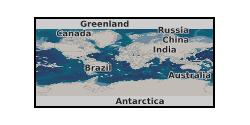Capillarity
Type of resources
Available actions
Topics
Keywords
Contact for the resource
Provided by
Years
Formats
Representation types
Update frequencies
-

Image data published in AGU paper "Estimation of Capillary Pressure in Unconventional Reservoirs Using Thermodynamic Analysis of Pore Images". The images of unconventional shale rock pores were captured using nano-CT and SEM imaging methods. Images are segmented into fluid (or pore) and rock phases and are stored in RGB format as JPG files. Images were used to produce the plots and data presented in the above referenced paper.
-

Supporting data for the paper 'Small-scale capillary heterogeneity linked to rapid plume migration during CO2 storage'. We supply experimental, analytical and numerical simulation data used in the paper. The supplied zipped folders follow the same order as the main paper, with codes to reproduce each figure (and those in the supporting information PDF). There are also video files (in the 5_Field_scale_simulation zipped folder) showing the final CO2 plume evolution from the static images in the main paper Figure 4. Descriptions of each of the folders are given below: 0 - README. This contains detailed instructions on the data and using the supplied files. 1 - Scaling analysis. This contains the scaling analysis analytical methods, with figure generation for Figure 1 in the main paper. 2 - Petrophysics. This contains all the petrophysical experimental data, analysis files and core flood simulation files. This is used to produce Figure 2 in the main paper. 3 - Fine_resolution_simulations. This contains the simulation files, Matlab post processing files and figure generation for the fine resolution simulations, presented in Figure 3 in the main paper. 4 - MIP_upscaling. This contains simulations files, Matlab post processing files and figure generation for the macroscopic invasion percolation scheme. The results of this are presented in the supporting information document. 5 - Field_scale_simulation. This contains the simulations files, Matlab post processing files and figure generation for the final field scale simulations in the main manuscript Figure 4 and in the supporting information. In each folder are separate READMEs containing specific information relevant for the included files.
 NERC Data Catalogue Service
NERC Data Catalogue Service